Monument Valley, often referred to as the “8th Wonder of the World,” is iconic for a reason. Towering buttes, red desert-like landscapes, and rugged rock formations make this 27,000-square-mile land feel otherworldly. Not only is it a massive tourist attraction, but it has also been the setting for numerous movies and TV shows filmed in the state of Utah. From the record-breaking Chosen TV series to throwback classics like Footloose, the Beehive State has served as the backdrop for some of Hollywood’s most unforgettable moments on screen.
But before the 1930s, Monument Valley (and the rest of Utah, for that matter) wasn’t on the minds of Hollywood filmmakers. Once John Wayne set foot in the area, it wasn’t long before Monument Valley became a magnet for directors and actors seeking their next big project. There was no doubt about it—something about Monument Valley captivated filmmakers, especially those hoping to capture the essence of the Wild West. Wayne himself said, “Monument Valley is the place where God put the West.”
In this blog, we’ll explore John Wayne’s most iconic Westerns filmed in Monument Valley. You’ll discover the exact filming locations you can visit today—and learn what made John Wayne fall in love with this breathtaking landscape.
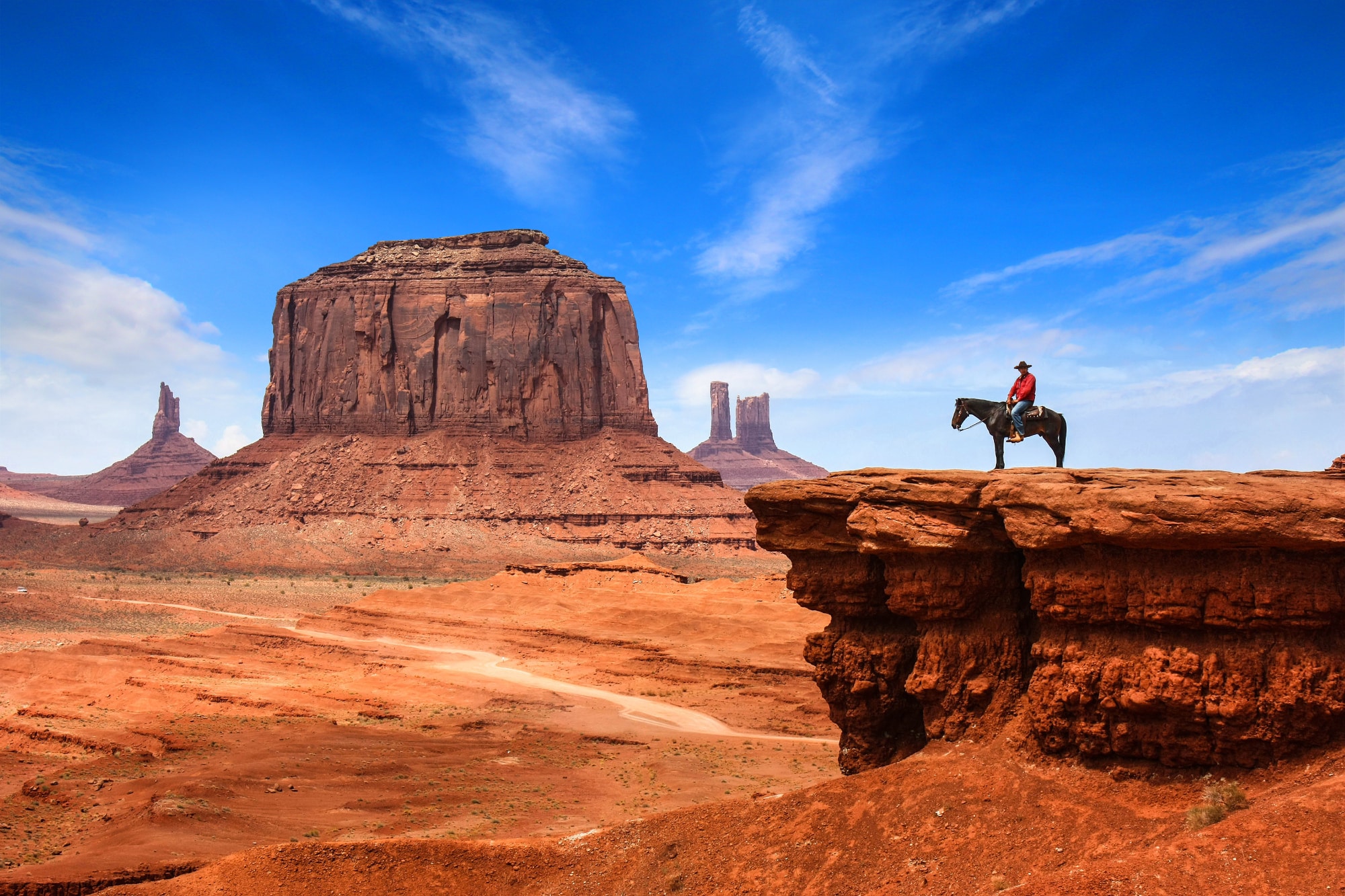
John Wayne’s Top 5 Western Movies Filmed in Monument Valley, Utah
What made Monument Valley the iconic setting of America’s Wild West films? It all started with Harry Goulding. In the 1920s, Goulding and his wife fell in love with Monument Valley’s unique landscape, purchasing a plot of land and establishing a Trading Post (now known as Goulding’s Trading Post Museum). Unfortunately, when the Depression hit in the 1930s, Goulding’s Trading Post and the surrounding region suffered a significant impact.
In an effort to save his business and bring Monument Valley into the limelight, Goulding had an idea. He gathered the best photos that showcased the magnificent buttes that had drawn him and his wife to the area years prior—and he took them to the place he knew would appreciate the land as much as he did: Hollywood, CA.
While trying to gain the attention of filmmakers in Hollywood, one in particular was enamored by the photos: the one and only John Ford, who’d go on to direct 10 movies in the rugged region. Ford immediately recognized Monument Valley’s potential as the ideal backdrop for Great American Westerns—and thus began a legendary partnership between filmmaker and landscape that would define the visual language of the genre for decades to come.
1. Stagecoach (1939)
Stagecoach follows a group of eccentric passengers traveling aboard the Overland stagecoach to Lordsburg, New Mexico, in the late 1880s. Among them are a woman of ill repute, an alcoholic philosopher, a timid whiskey salesman, and a motley crew of other travelers. Along the way, they must contend with danger on the frontier—and the presence of an escaped outlaw, the Ringo Kid, played by John Wayne. Although Wayne was a B-list actor at the time, Stagecoach made him a major star and cemented Monument Valley as the picturesque setting for the Wild West.
Relive John Wayne’s Stagecoach moments in Monument Valley by visiting these iconic filming locations:
- Agathla Peak: In Stagecoach, when Tim Holt leads the cavalry down into the valley, the dramatic peak on the horizon is El Capitan (also called Agathla Peak). This formation, shaped by cooled lava and basalt, is near Kayenta and visible from U.S. Route 163.
- Valley Drive: This scenic 17-mile loop allows visitors to traverse the same sweeping landscapes that served as the backdrop for Stagecoach and countless other John Ford Westerns. The self-guided dirt loop gives you a chance to experience the dramatic mesas, buttes, and desert vistas up close.
You may be interested to hear that John Wayne was the only one out of the principal cast to venture to Monument Valley during the film’s 1938 production. The rest of Stagecoach was shot in California’s San Fernando Valley. But after John Wayne filmed his first movie in the desert-like land, he would go on to practically make it his second home.
2. Fort Apache (1948)
Fort Apache tells the story of a strict and prideful commander, Lt. Col. Owen Thursday (Henry Fonda), whose poor judgment leads to conflict with the Apache. John Wayne stars as Captain Kirby York, a seasoned officer who attempts to prevent disaster by fostering understanding and respect for the Native people.
You’ll recognize the towering buttes and mesas of Monument Valley in this John Wayne classic. While many of the scenes highlight Monument Valley’s “Old West” feel, the movie also features Arizona’s Fort Apache Indian Reservation, located in the White Mountains. This 1.67-million-acre tribal land provided the ideal backdrop for an authentic military setting in Fort Apache. A majority of filming took place in Utah and Arizona, with some shots filmed in Simi Valley, California.
3. She Wore a Yellow Ribbon (1949)
She Wore a Yellow Ribbon follows Cavalry Captain Nathan Brittles (John Wayne), who’s on the verge of retirement—but he has a few more adventures to partake in. Tasked with easing tensions with the Cheyenne and Arapaho after Custer’s Last Stand, Brittles must navigate duty, honor, and the passing of an era. As he leads one final patrol across the sweeping Western frontier, he faces not only external conflict but also his own sense of legacy and change in a world that’s moving on without him.
Monument Valley once again is on full display in She Wore a Yellow Ribbon. Apart from the massive buttes and red desert-like land, visit these spots to experience the film in real time:
- Mitten Buttes: Here is where you’ll recognize the setting for Captain Nathan Brittles’ fort, which stood in the shadows of Monument Valley’s well-known formations, Mitten Buttes. Before filming, a false front was constructed at the base of Mittens Buttes for John Wayne’s standout performance in She Wore a Yellow Ribbon.
- Goulding’s Lodge: A large portion of the film was shot at Goulding’s Lodge, which now stands as a museum, at 1000 Gouldings Trading Post Rd, serving as the army post in the Western. The flag that was raised in She Wore a Yellow Ribbon still stands just outside of the lodge, and guests can make their way into the museum to find Joanne Dru’s (who played Olivia Dandridge) costume, which she wore during the film. At the back of the lodge, John Ford, who directed the movie, added a blacksmith shop to the backside of the space.
- Rock Door Mesa: Just a few minutes from the lodge, you’ll find Rock Door Mesa, the setting for the famous storm scene where Brittles courageously led the troops through thunder, lightning, and pouring rain in She Wore a Yellow Ribbon.
John Ford and his team shot She Wore a Yellow Ribbon in just 31 days, from October 28 to November 27, 1948. The crew traveled first to Flagstaff, Arizona, by train and then made the full-day trip to Monument Valley by car. Other film locations included Arizona and Mexican Hat, near the San Juan River in Utah.
4. Rio Grande (1950)
Rio Grande is a classic Western directed by John Ford and stars John Wayne and Maureen O’Hara. Set after the Civil War, it follows Lt. Col. Kirby Yorke (Wayne), who commands a U.S. Cavalry outpost along the Rio Grande tasked with defending settlers from Apache attacks. Tension rises when his estranged wife, Kathleen (O’Hara), arrives after their teenage son joins Yorke’s regiment. The film weaves together themes of duty, honor, and family reconciliation against the backdrop of the rugged frontier.
Monument Valley is featured prominently throughout this John Wayne film, providing a stunning and iconic backdrop that captures the vastness and beauty of the American frontier, thereby enhancing the film’s sense of adventure and timeless Western atmosphere.
Other notable sites include Moab, Utah, a common location for films throughout the past few decades. Colorado River, White’s Ranch, Professor Valley, and Ida Gulch are all used to transport viewers into the Wild West in Rio Grande.
5. The Searchers (1956)
Perhaps John Wayne’s best and most notable role was in the revered Western, The Searchers. Once again directed by John Ford, it follows Ethan Edwards (Wayne), a hardened Civil War veteran, who embarks on a years-long quest to rescue his niece after Comanche raiders kidnap her. As the journey unfolds, Ethan’s obsession and deep-seated hatred blur the line between heroism and vengeance, making the film a powerful exploration of racism, redemption, and the myth of the American frontier.
The opening sequence is a view of John Ford’s beloved Monument Valley, setting the scene for the iconic movie. Filming in the rugged landscape took place in the following locations:
- Mitchell Butte: The striking Mitchell Butte forms part of the backdrop in one of the film’s most emotional moments—the “don’t ever ask me more” scene between Ethan and Martin. This sequence was shot on a dune just south of the butte, its towering red cliffs emphasizing the raw, isolated beauty of the desert landscape and mirroring Ethan’s inner turmoil.
- Mitten Buttes: The Mitten Buttes appear prominently in the movie’s famous opening and closing scenes, framed through the doorway of the Edwards’ cabin. Shot looking north between Gray Whiskers and Mitchell Butte, these twin rock formations create one of the most iconic images in Western film.
- Sentinel Mesa: Sentinel Mesa served as the location for the Edwards homestead set. The vast, flat-topped mesa looms in the background of several key scenes, grounding the story in the harsh yet majestic environment of Monument Valley.
- Totem Pole: The slender rock spire known as the Totem Pole (part of the Yei Bi Chei formations) appears as the setting for Scar’s camp.
- Ford’s Point: Ford’s Point provides the sweeping vantage where Ethan surveys Scar’s camp, with Merrick Butte rising behind him. This location captures the vast scope of Monument Valley and became one of John Ford’s favorite filming spots, used repeatedly to showcase the hero’s isolation against the endless expanse of desert and sky.
Mexican Hat, located off the San Juan River, was also used as a filming location for The Searchers, as well as the Mojave Desert and Bronson Canyon in California.
Monument Valley: John Wayne Country
Anytime John Wayne filmed a movie in Monument Valley, he stayed at Goulding’s Lodge—the trading post-turned-lodge owned by Harry Goulding, the man credited with putting Monument Valley on Hollywood’s map. In its early years, the lodge wasn’t large enough to accommodate John Ford and the sizable crews he brought along, so Goulding and his wife hosted them in their own home. In 1953, after several John Wayne films were shot in the area, Goulding tore down the original rock cabins and built a whole row of motel rooms. Once completed, John Wayne always requested the far-west room, next to his favorite director, John Ford. Following the success of The Searchers, Goulding and his wife doubled the number of rooms again, with Wayne and Ford continuing to request the last room along the row.
Outside of the movies he starred in, John Wayne still chose to visit Monument Valley on other occasions. From producing his first movie, Angel and the Badman (1947), amongst the buttes to filming a commercial for a non-aspirin pain reliever in the famed location, he couldn’t seem to get away from the rugged region. It’s no wonder the area was eventually coined “John Wayne Country,” attributed to the Western actor’s deep appreciation for the land.
Whether you’re visiting Monument Valley to relive John Wayne’s iconic roles or to spark ideas for your next film, its rugged beauty is sure to take your breath away. And if this legendary landscape stirs your creative side, Avalanche Studios can help you bring that vision to life. Offering comprehensive video production services, from concept to final cut, our team of award-winning writers, filmmakers, and creatives makes sure your next project captures the same cinematic magic that made Monument Valley a Hollywood favorite. Request a quote from us to get started and make Monument Valley the backdrop of your upcoming project.

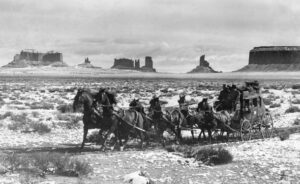
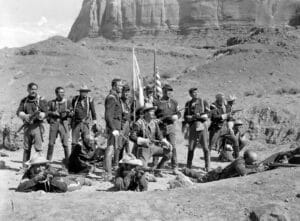
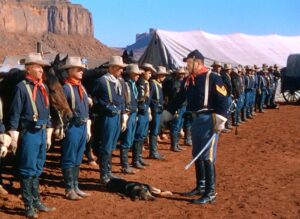
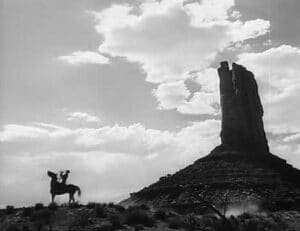
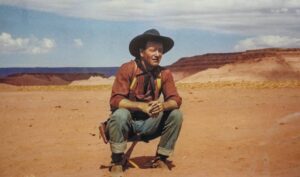
Recent Comments